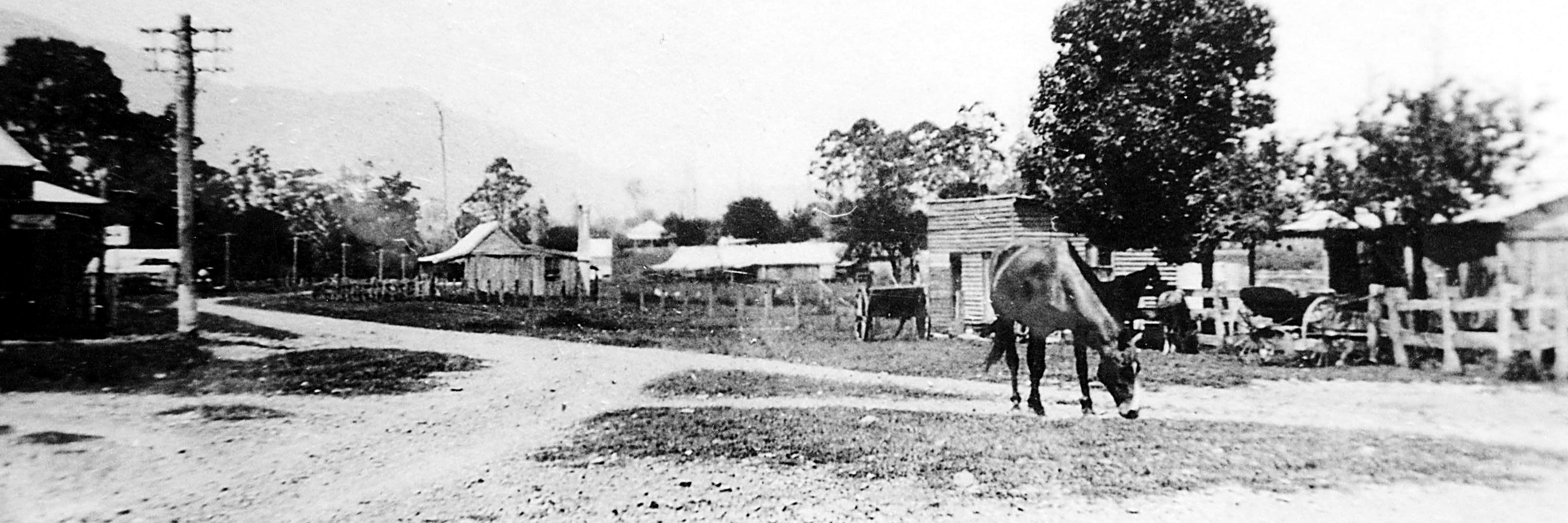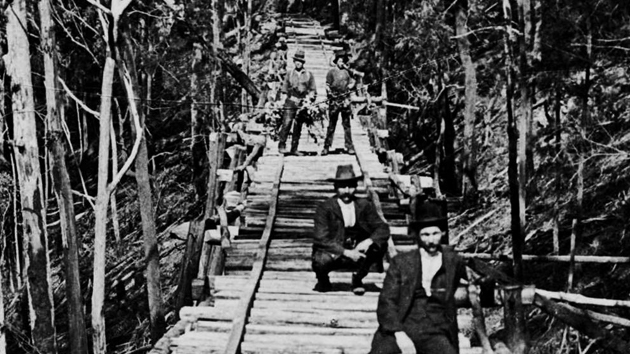Earl Preston Reserve
Welcome to the Gleniffer Valley
“The North Arm [Gleniffer] can boast a beauty all its own, with its bright silver stream of pure water winding in and out among the rich farms, and with height above height of mountain peak, clothed with a wealth of verdure which can only be fully appreciated by those who have seen it…”
Northern Courier, 22nd February 1898
Neighbouring the spectacular World Heritage Dorrigo National Park, Bindarri National Park and Tuckers Nob State Forest, the Gleniffer Valley is part of a significant natural asset that is highly valued by local residents and the Bellingen Shire community. For generations, locals have enjoyed swimming in the crystal-clear waters of the Never Never River, picnicking in lush natural surrounds, bushwalking and birdwatching, and coming together for social gatherings at the Gleniffer Hall and Church.
The Natural Environment
The Gleniffer Valley enjoys a warm temperate climate, with high rainfall and a predominantly summer storm season. This combination of abundant rain, rich volcanic fertile soils and temperate climate has produced an incredibly biodiverse environment, supporting a great variety of flora and fauna. Most properties with native bush and waterways are home to a multitude of species of frogs, reptiles, mammals (including platypus), birds, fish and insects.
The Arrival of White Settlers
When European settlers first began to arrive in the Gleniffer Valley in the 1860s, they discovered a land of rich and abundant natural resources, with prime timber cutting and agricultural areas, lush river frontages and fertile valleys. The traditional Indigenous custodians of this country are part of the Gumbaynggirr Nation, and have been connected with this land for tens of thousands of years.
As parcels of freehold acreages were given to settlers for timber getting, dairy farming and other agricultural pursuits, rural properties were cleared and fenced, and the Gumbaynggirr people were forced to the fringes, or onto Missions or Reserves. Conflicts between the Aboriginals and settlers began to diminish by the late 1800s, when the devastating effects of dislocation, depopulation and disease irreversibly altered the traditional way of life for the Gumbaynggirr people.
Today the Indigenous custodians of this land are reclaiming local knowledge of this country, and sharing it with the greater community through Gumbaynggirr language classes, local arts and cultural festivals, and other community initiatives.

Pioneer families of the Promised Land
“The life was healthy and simple and it did not exclude by any means mental ability, though book-lore was a back number. For compensation, the book of nature was ever near, her pages flying free and open; nothing was lacking to the pioneer but the soft cradle of conventional comfort. This he sacrificed willingly, thereby learning to value it when he earned it again by the sweat of his brow.”
-Richard Ingell, 1921, Gordonville School Teacher.
The first European inhabitants of the Gleniffer valley arrived in 1866. John and Margaret McFadyen hailed from Glasgow in Scotland. Margaret named Gleniffer after the Gleniffer Braes near Paisley, as the mountains reminded her of the verdant hills of Scotland. John McFadyen built their home from large slabs of bush timber and planted a sizeable orchard in the surrounding area- parts of which were still visible a century later.
The next family to arrive was Nicholas Keough and his kin, who bought 200 acres across the road from the McFadyens. Much of the best real estate in the area was acquired by these two families. Later, Gleniffer was given another name, The Promised Land, by Alex Nicholson. He was discussing the beauty of the land with “Red Jack” McFadyen, and it’s believed he said, “This is the land of milk and honey. It should be called the Promised Land.”
The original Gleniffer village
The beginnings of community life began in the households of local inhabitants. The first post office, school and church service were all established in John McFadyen’s home. As the valley welcomed more settlers, a village formed in these very lands of the Earl Preston Reserve in the early 1900s. A butter factory was built initially, followed by the opening of a bakery, butchery, general store and post office. The Liberty hall (which stood just near the current hall) was also a popular destination for local community gatherings, including social events and sporting activities like boxing, cricket and football.
This thriving village continued to flourish until it was hit by two world wars and the Great Depression. However, it was the change of lifestyle in the 1970s that also altered the community, as the timber getting and farming industry declined.
Arrival of the “Alternative Lifestylers”
The 1970s also brought a new group of settlers to the area. The Aquarius festival in Nimbin in 1973 – which was known as Australia’s Woodstock – attracted droves of “alternative lifestylers” out of the cities to the areas of the mid and north coasts. These people sought to live by “new age” ideals in reaction to wars, environmental degradation and societal conventions, and set up intentional communities on the land, some of which are still in existence today. The area continues to attract artists, craftspeople, writers, musicians and tree-changers inspired by the slow living movement established decades before.

Earl Preston
Earl (or “Doc”, as he was known) Preston arrived in Gleniffer in 1929. He was an active and much-loved member of the community, who generously gave his time and possessions to many aspects of village life.
Acknowledgement
The Never Never Catchment Group, along with local residents and community groups, have played a significant role in caring for the environment you see around you - including riverbank regeneration, rubbish removal and fostering of wildlife corridors. The beautiful surroundings that are here for you to enjoy would not have been possible without their outstanding contributions to environmental conservation in the Gleniffer Valley.

